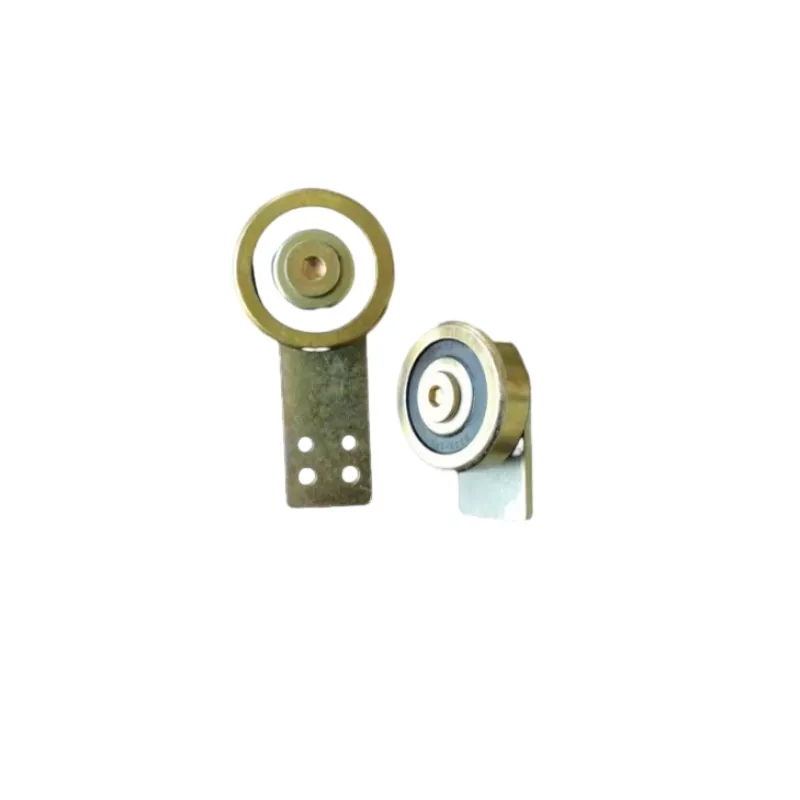
Dec . 01, 2024 11:44 Back to list
single direction thrust bearing
Single Direction Thrust Bearing An Overview
In various mechanical systems, thrust bearings play a crucial role in ensuring the smooth operation and longevity of machinery. Among the different types of thrust bearings, single direction thrust bearings are particularly significant due to their ability to handle axial loads in one direction efficiently. This article aims to provide a comprehensive overview of single direction thrust bearings, including their design, applications, advantages, and maintenance considerations.
Design and Structure
Single direction thrust bearings are designed to accommodate axial loads arising from the rotation of an element, such as a shaft. These bearings consist of several key components a raceway, rolling elements (typically balls or cylindrical rollers), and a cage or separator. The raceway serves as the primary contact surface, while the rolling elements facilitate smooth motion. The design is optimized to minimize friction and wear, which are critical for maintaining performance and prolonging the life of the bearing.
A notable characteristic of single direction thrust bearings is their configuration. Unlike double direction thrust bearings, which can support axial loads from both directions, single direction thrust bearings are limited to handling loads from one side. This simplifies their design and reduces the material costs associated with manufacturing them. Typically, they are mounted onto the shaft with an integrated housing that keeps the bearing securely in place during operation.
Applications
Single direction thrust bearings find their applications in a variety of industries and machinery, including
1. Automotive They are commonly used in the automotive sector for supporting the shafts of gears and camshafts, which require precise control of axial movement.
2. Industrial Machinery These bearings are essential in machinery like pumps, turbines, and conveyor systems, where axial loads are prevalent during operation.
single direction thrust bearing

4. Marine Operations Ships utilize these bearings to support propeller shafts, enabling efficient propulsion and navigation.
Advantages
The advantages of single direction thrust bearings make them a preferred choice in numerous applications. They are relatively easy to install and require minimal maintenance, reducing downtime in industrial settings. Their ability to manage high axial loads, combined with low friction, results in enhanced energy efficiency, making them economically favorable.
Moreover, the design of single direction thrust bearings allows for improved heat dissipation, enhancing their reliability under high-load conditions. This thermal management minimizes the risk of overheating, which can lead to premature bearing failure and costly repairs.
Maintenance Considerations
To ensure the longevity and optimal performance of single direction thrust bearings, regular maintenance is essential. Operators should routinely inspect bearings for signs of wear or damage, such as pitting or discoloration. Adequate lubrication is crucial, as it reduces friction and helps to dissipate heat. Using the correct type of lubricant, whether it be grease or oil, can significantly impact the bearing's lifespan.
Furthermore, it is crucial to monitor operating conditions, such as load levels and temperature. Exceeding the bearing's rated capacity can result in failure, making it important to adhere to manufacturer specifications.
Conclusion
Single direction thrust bearings are an indispensable component in many mechanical systems, facilitating the effective management of axial loads. Their robust design, coupled with easy installation and maintenance, positions them as a reliable choice for various applications. By understanding their characteristics and best practices for maintenance, industries can leverage the advantages offered by single direction thrust bearings to enhance the performance and reliability of their machinery.
Latest news
-
Durable Scaffolding Clamps - Secure & Reliable Tube Connectors
NewsAug.28,2025
-
Common Failures in Thrust Ball Bearings and Solutions
NewsAug.22,2025
-
How Tapered Roller Bearings Can Take Shock Loads
NewsAug.22,2025
-
Angular Bearings in High-Precision Spindles
NewsAug.22,2025
-
The Impact of Misalignment on Cylindrical Roller Bearing Performance
NewsAug.22,2025
-
The Role of Cage Design in Deep Groove Ball Bearing Durability
NewsAug.22,2025
